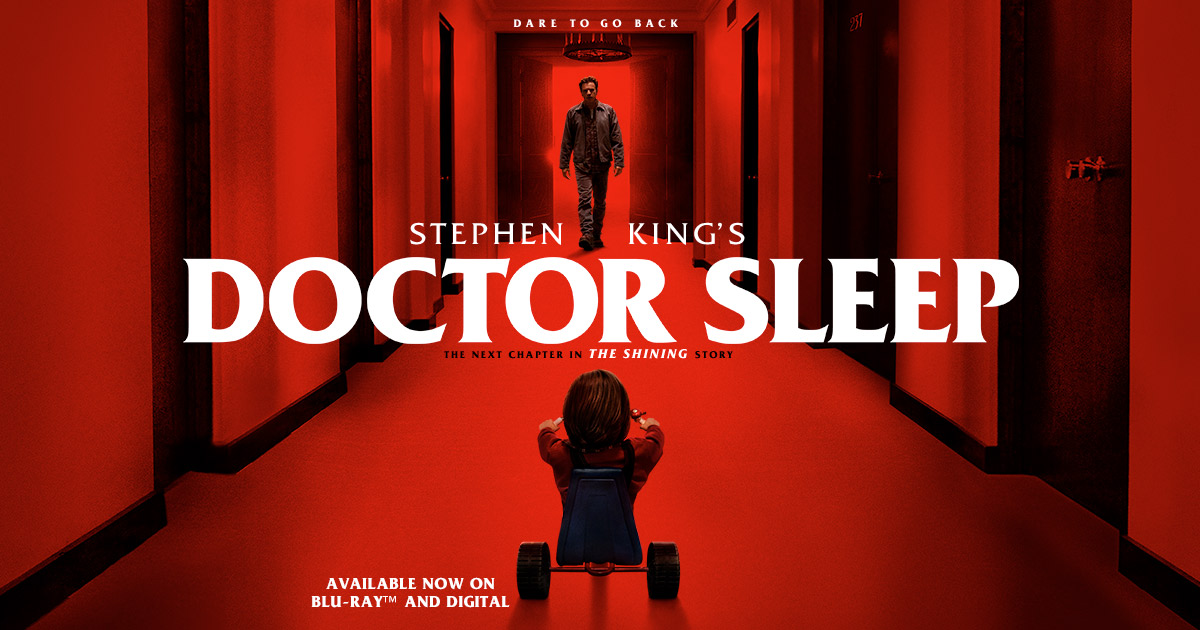“Doctor Sleep” (2019) was adapted as a sequel to “The Shining” novel. PHOTO CREDIT: doctorsleepmovie.com
Stephen King’s 2013 novel “Doctor Sleep” was one of the most difficult works of his to adapt to the big screen, seeing as how it functions as a direct sequel to his novel “The Shining” while ignoring Stanley Kubrick’s 1980 film adaptation of the same name.
It seemed like a beast too big and complicated to properly adapted, but Mike Flanagan, Director of Netflix’s “The Haunting of Hill House,” “Hush” and another King adaptation “Gerald’s Game”, did the impossible: not only did he adapt this tricky novel into a feature film, but it appealed to both King fans and Kubrick fans by perfectly blending the two distinct stories together. And if you’re interested in finding out why blending King’s and Kubrick’s versions of “The Shining” is so difficult, I invite you to read on and find out.
I’ll keep this simple for the layman – you don’t need to read King’s novel to understand this story, but I hope that you have at least seen Stanley Kubrick’s “The Shining.” This film is where viewers can find the major differences between the novel and the movie.
Most of the famous iconography from the film was created for the screen and did not come from King’s page.
For example, the massive hedge maze that functions as the climax of Kubrick’s film is completely absent from King’s novel, as are the ghostly twins and the bleeding elevator. The famous quotes, “Here’s Johnny” and “All work and no play makes Jack a dull boy” were also invented by Kubrick and co-writer Diane Johnson.
Most notably, the endings are wildly different – almost polar opposites. In the film, Jack Torrance freezes to death, while in the novel, he blows himself up along with the hotel. Needless to say, making a sequel to this story while also having to blend both stories together seems like a bit of a challenge. So how did Flanagan handle it?
I think it is important to first talk about “Doctor Sleep.” The story shifts focus and follows an adult Danny Torrance as he protects a young girl who possesses the ability to shine from a ruthless cult known as The True Knot, who prey on children with the shining in order to remain immortal.
For the most part, “Doctor Sleep” is a faithful adaptation of Stephen King’s novel and makes the smart decisions to remove aspects of the novel that would have only added fluff and filler to the movie. Despite its running time of two hours and thirty-two minutes, and the director’s cut running three hours on the dot, the film keeps things streamlined and simplified from beginning to end.
It also includes some of the most empathetic and engaging performances I’ve seen in a while. Ewan McGregor (“Star Wars,” “Trainspotting,” “Birds of Prey”) as Danny Torrance is wonderfully sympathetic and restrained, and Rebecca Ferguson (“The Greatest Showman,” “Mission Impossible,” “Dune”) as the True Knot’s leader Rose The Hat manages to be seductive, maternal, terrifying and enthralling all at once.
But where the film truly shines as a blended adaptation is in its ending. As previously mentioned, in the “Doctor Sleep” novel, the Overlook Hotel does not exist. However, every trailer and poster for the “Doctor Sleep” adaptation boasted a return to the haunted hotel – the film even holds the tagline “Dare To Go Back”. Mike Flanagan made the decision to stay faithful to the Kubrick film and keep the Overlook Hotel intact instead of burning it down in between films while also staying faithful to King’s 1977 novel, burning the hotel down at the end.
“We’re changing the ending of ‘Doctor Sleep’, but we’re changing it to be the ending of ‘The Shining’ that King never got to see made,” Flanagan stated in an interview on the Doctor Sleep blu-ray.
The inclusion of the Overlook also lends itself to one of the best scenes in the film, in which Danny speaks with the ghost of his father and discusses their relationship, as well as the film’s themes of alcoholism, childhood trauma and how much our parents instill in us as we get older.
That was the scene that made Stephen King agree to let Flanagan use the Overlook Hotel in the film in the first place, as he originally wanted nothing resembling the Kubrick movie in “Doctor Sleep,” but was won over when he saw how much Flanagan understood the themes present in both King’s 1977 novel and his 2013 adaptation.
It is always impressive to see someone tackle such a seemingly impossible task. Flanagan seemed to have his finger on the pulse when it came to taking King’s introspective and difficult stories and turning them into films. He had success with his 2017 adaptation of King’s novel “Gerald’s Game” which most people considered to be unfilmable.
I think his most impressive achievement comes in the form of “Doctor Sleep.” A film that pleases fans of two incredibly different versions of the same story while adapting a new story on top of that. It’s thoughtful, powerful, immersive and of course, scary. This is King we’re talking about after all. It’s a perfect watch for October.
So, do you dare to go back?




